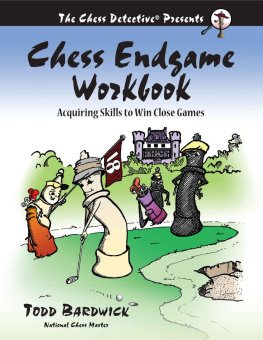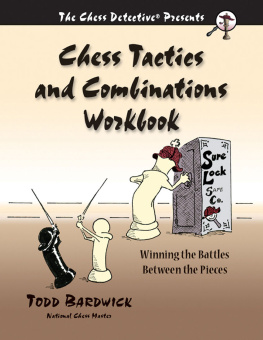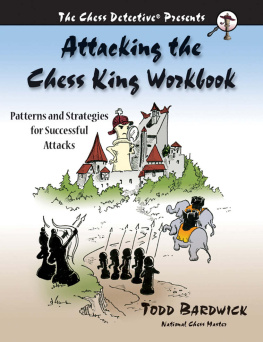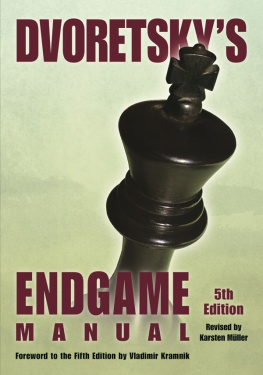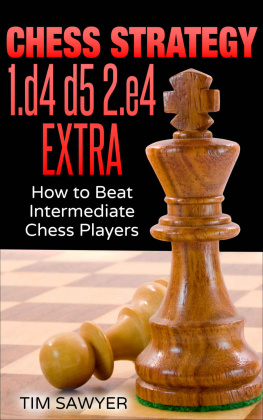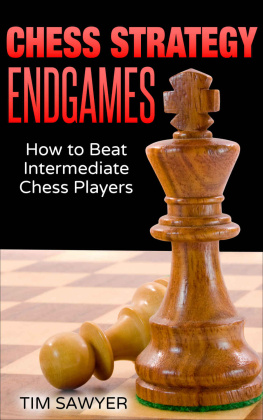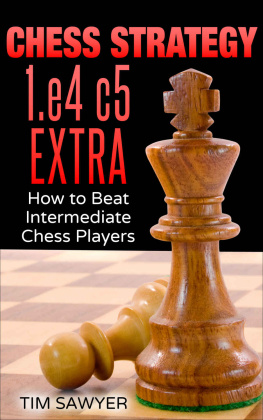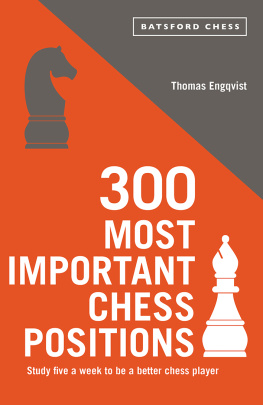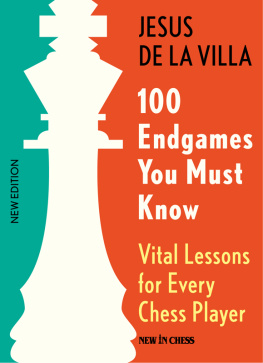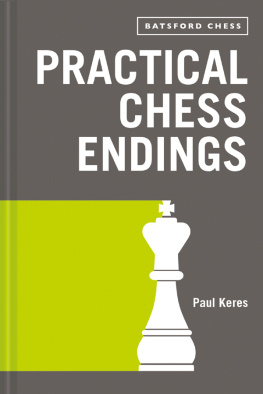Chess Detective Press
Illustrations by John Weiss and Kevin Hempstead
Chess Endgame Workbook
Acquiring Skills to Win Close Games
Copyright 2021 by Todd Bardwick. Printed and bound in the United States of America. All rights reserved. No part of this book shall be reproduced in any form or by any electronic or mechanical means including information storage and retrieval systems without permission in writing from the publisher, except by a reviewer, who may quote brief passages in a review. Included in these reserved rights are publishing on the Internet or in annotated databases. Published by Chess Detective Press, 1 Red Fox Lane, Englewood, Colorado 80111. 303-770 -6696. First Edition.
First printing: March 2021
www.ColoradoMasterChess.com
ISBN-13: 978-0-9761962-7-3
Library of Congress Control Number: 2021904729
Library of Congress Cataloging-in-Publication Data available upon request
Contents
INTRODUCTION
The third World Champion, Jos Ra l Capablanca, said In order to improve your game, you must study the endgame before everything else, for whereas the endings can be studied and mastered by themselves, the middle game and the opening must be studied in relation to the endgame.
The endgame is the third and final phase of the game; if you make a mistake here, you may not have enough time to recover.
The endgame has arrived when material is greatly reduced, allowing the king to enter the game without fear of falling into a mating net.
Knowing if an endgame position is winning, drawing, or losing will help guide you in the middlegame.
Thousands of known endgame positions favor one side or the other. These are theoretical and instructive positions with a large body of supporting work.
My goal is to present typical positions and practical examples for the intermediate-level player looking to improve over the board play without going into the minute details required for master-level players. There is a huge volume of knowledge available and excellent books written with very specific endgame situations geared toward high rated players.
The player who wins the game is often the one who recognizes the theoretical win and can steer the game in that direction.
Because of the sheer complexity of the endgame, chess engines have made significant contributions to endgame theory.
An important decision that influences endgame strategy is whether you are playing for a win or draw. If your position is worse, drawing is better than losing.
As pieces are exchanged, every endgame moves closer to a king and pawn ending.
A question you should be constantly asking yourself in this phase of the game is, If all of the pieces are traded off, who wins the king and pawn endgame?
When you are ahead in material or have the superior position, referred to as the strong side , you generally want to trade pieces, not pawns, to simplify the game.
If you are behind in material or with the inferior position, referred to as the weak side , you generally want to trade pawns with the goal of eliminating all of your opponents pawns, which have the potential to become future queens.
The player who is losing generally wants to keep pieces on the board in order to create complications and opportunities for the opponent to make a mistake. Avoid trading down into a losing king and pawn endgame; with more pieces on the board and best play, drawing chances increase.
Making progress toward a winning position is a goal for the strong side in the endgame; if the weak side can prevent progress from being made, the game is drawn.
Deep calculation of forced sequences, like accurately calculating pawn races, is critical in the endgame.
Every tempo can be extremely important and exact calculation often makes a difference in the outcome of the game. Sometimes you need to lose a tempo to put your opponent in zugzwang or avoid your opponent putting you in zugzwang.
Since most of the pieces have been captured and there are fewer legal moves in the endgame, sometimes you can use the process of elimination to determine the best move.
In many endgames, the king is the most powerful piece. While the king cannot be exchanged, the fighting value of the king in the endgame is about four pawns, between the value of a minor piece and a rook.
Endgame positions without pawns are fairly rare.
Both players should strive to create passed pawns, since a pawn must become passed before it can promote.
Pawn promotion is a central theme in the endgame. Whether or not one side or the other, or both, can promote a pawn is often critical. The player who promotes first often wins the game.
In general, the mobility of pawns and how far they are advanced on the board is more important than how many pawns there are. Quality is more important than quantity.
When passed pawns are blocked by the defenders king, winning chances are diminished and sometimes even vanish.
Long-range pieces are benefited when there are pawns on both sides of the board and the position is open.
General endgame principles should be followed, but, of course, there are often exceptions to the rule.
It is assumed the reader is already proficient in basic checkmates like king and queen vs. king, king and rook vs. king, and queen-rook/rook-rook roller mates. Also, the reader should be familiar with general chess terms as well as the common types of draws, particularly insufficient mating material, stalemate, and threefold repetition.
Like other workbooks in the Chess Detective series, this book is divided into ten lessons.
Lessons 1 and 2 cover king and pawn endings.
Lesson 3 is about creating passed pawns.
Lesson 4 presents strategies to promote passed pawns.
Lesson 5 is about activating and centralizing the king.
Lesson 6 is about simplifying to an endgame that is easier to win.
Lesson 7 discusses ways to salvage a draw when you are losing.
Lesson 8 covers minor piece endings with bishops and knights.
Lesson 9 covers rook endings.
Lesson 10 covers queen endings.
Appendix A is a summary of chess endgame guidelines and general principles. As you go through the list, think of it as a checklist to see what you are doing correctly and what items need work.
Appendix B addresses what a chess player should be thinking about during the game when it is their move and when it is the opponents move. These steps will structure your thoughts and keep your mind thinking in an efficient, organized way.
The solutions to the problems at the end of each lesson are explained in detail in Appendix C . Each lesson contains ten Basset Hound and ten Chess Detective problems. Reading through the detailed solutions carefully is a great learning opportunity. For most of the problems, the complete answer is much longer than the answer space provided. When this is the case, write your answer on a separate piece of paper.
If you are a novice player up to an intermediate-level tournament player, start with the easier Basset Hound problems, designated with the following symbol:
Intermediate to advanced-level tournament players can move on and solve the harder Chess Detective problems, designated with this symbol:

